Manufacturers of butter rely on accurate analysis of fat, moisture and salt. By managing each of these constituents precisely, the producer can remain cost-effective.
The practical element of making such savings is dependent on both the accuracy of the analyses and the accessibility to real-time results. Utilizing the DA 7250, production staff in the plant can carry out their own analysis 24/7 and instantly access the results.
The results can be used to optimize processes optimization and help avoid costly mistakes and potential penalties.
The Near Infrared Reflectance (NIR) technique is well-suited for the measurement of butter, but limitations on equipment and instrumentation in the past have held back users who did not reap the full benefits of NIR.
Certain sample presentation requirements were difficult to carry out, such as using glass cups that had to be manually cleaned and filled, meaning analyses would be laborious, time consuming and error-prone.
DA 7250 SD
The DA 7250 SD is a NIR instrument designed that has proven its worth for use in the food industry. Harnessing innovative diode array technology, it conducts a multicomponent analysis in just 6 seconds without the need for sample preparation. In this short space of time, a great number of full spectra are gathered and averaged.
As the sample is analyzed in an open dish, the problems typically associated with sample cups are prevented, and user influence on results is dramatically reduced.
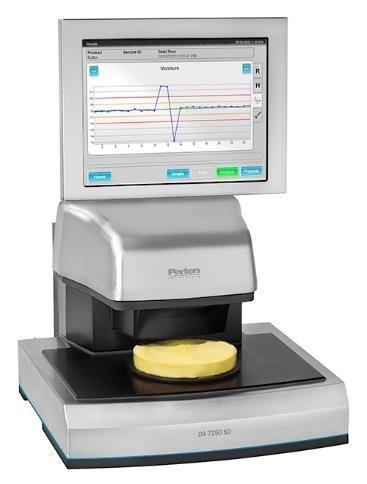
Image Credit: PerkinElmer Food Safety and Quality
Disposable petri dishes can be used, eradicating the need for cleaning between samples. The instrument is hygienic and easy to clean due to its stainless-steel sanitary design.
Experimental
More than 200 samples of butter from at least 12 different processing plants across North America and Europe acted as the calibration set. The DA 250 collected spectral data for each sample using the Disposable Cup Module. The reference chemistry for fat, moisture and salt was offered with the samples.

Image Credit: PerkinElmer Food Safety and Quality
Development of the calibrations was performed using Partial Least Squares (PLS) regression. The calibration models were improved by using Standard Normal Variant Transform and Savitsky-Golay 1st Derivative data pre-treatments.
Results and Discussion
The DA 7250 results are extremely precise in contrast to the results from the reference methods. The table below exhibits the relevant statistics for the respective parameters, and graphs are displayed at the end of this article.
The differences between the reference and DA 7250 are of the same magnitude as the standard deviations between two different reference labs. The DA 7250 possesses better precision than the reference methods, meaning that replicate analyses are typically more repeatable and representative.
Table 1. Source: PerkinElmer Food Safety and Quality
| Parameter |
Range |
Samples |
R |
| Fat |
78.2 - 84.8 |
200+ |
0.98 |
| Moisture |
13.7 - 18.3 |
200+ |
0.95 |
| Salt |
0.1 - 2.5 |
200+ |
0.99 |
In summary, the DA 7250 can analyze butter for the constituents fat, moisture and salt. The rapid speed gives users the ability to easily and precisely analyze a large number of samples a day in almost real-time.
The ease-ofuse and flexibility of the instrument mean that it can analyze dairy powders properly and efficiently, making it the perfect model for use at dairy plants around the world.
Fat: Fat is measured readily and precisely and the content is often regulated by governments to ensure appropriate labelling of the product.
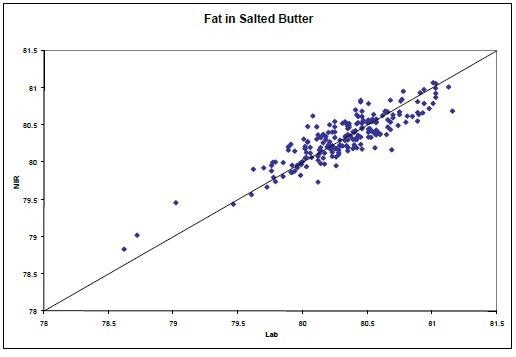
Image Credit: PerkinElmer Food Safety and Quality
Moisture: Appropriate moisture levels impact the profitability of the plant as well as the quality of the final product.
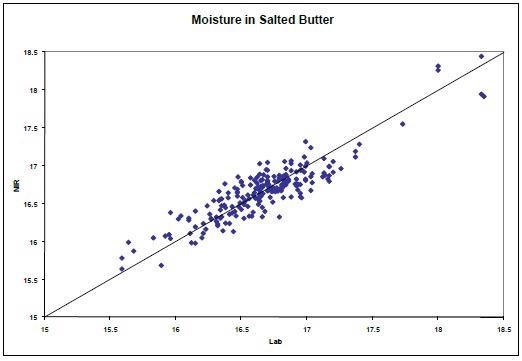
Image Credit: PerkinElmer Food Safety and Quality
Salt: Salt influences the taste and performace of butter in baked products.
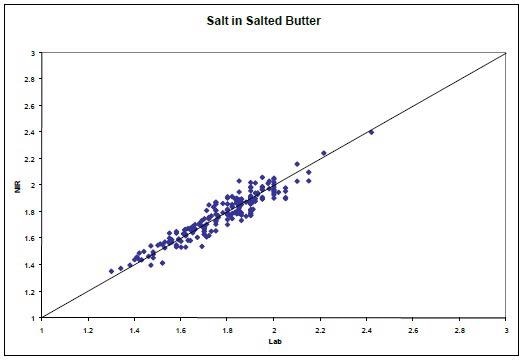
Image Credit: PerkinElmer Food Safety and Quality
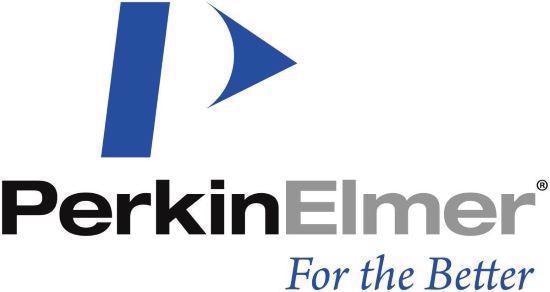
This information has been sourced, reviewed and adapted from materials provided by PerkinElmer Food Safety and Quality.
For more information on this source, please visit PerkinElmer Food Safety and Quality.